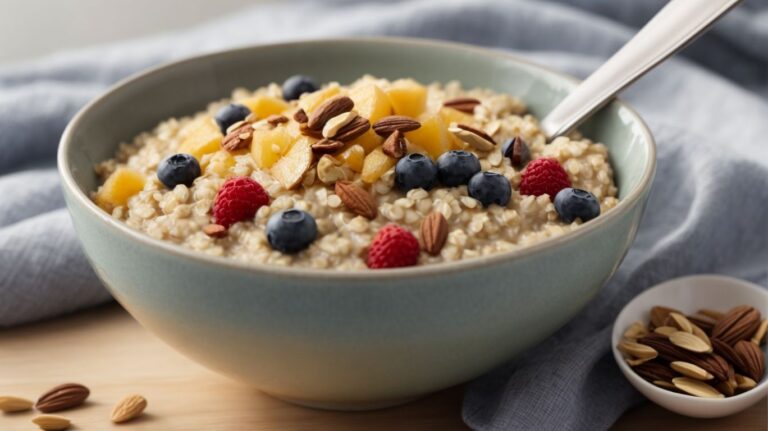How to Cook Kale for Salad?
Are you looking to elevate your salad game with a nutritious and flavorful ingredient? Look no further than kale!
In this article, we will explore the different types of kale, why it has become a popular salad choice, and how to choose and prepare it for your next meal. We will also delve into various cooking methods for kale salads and share some delicious flavor combinations to try.
Stay tuned for tips on making the perfect kale salad and get ready to impress your taste buds!
Key Takeaways:
What is Kale?
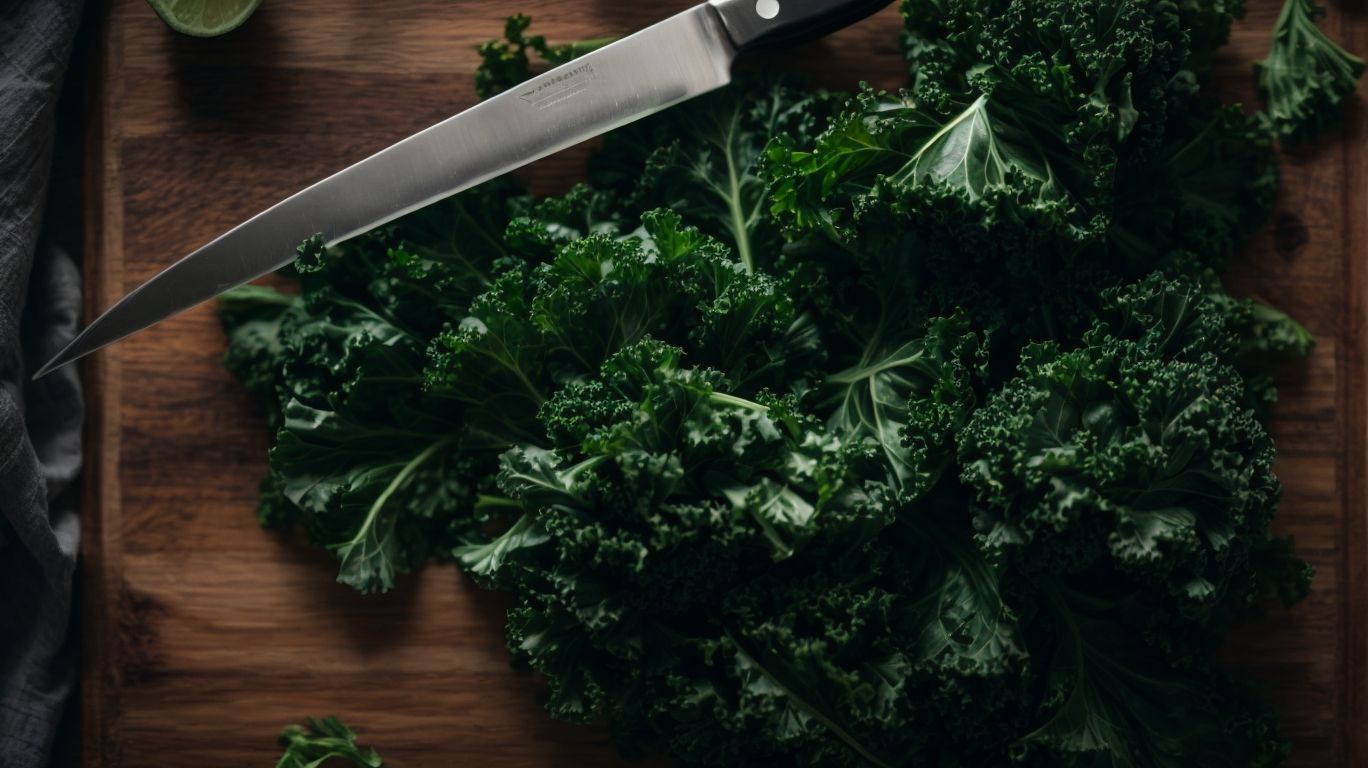
Credits: Poormet.Com – Alan Hall
Kale, a leafy green vegetable, is a popular and nutritious salad ingredient known for its versatility and health benefits.
Its unique texture, a combination of tender leaves and a slight crunch, adds a delightful contrast to salads. Kale comes in various types, including curly, Tuscan, and Red Russian, each offering its distinct flavor profile. While some varieties have a slightly bitter taste, others are milder, making them suitable for different palates.
When properly massaged or marinated, kale leaves can soften, making them more pleasant to eat raw. Kale can be sautéed, baked, or blended into smoothies, providing a nutritious boost to various dishes.
What are the Different Types of Kale?
Various types of kale exist, including curly kale, lacinato kale (also known as dinosaur kale), and red Russian kale.
Curly kale, with its ruffled leaves and slightly peppery flavor, is a versatile variety ideal for salads, smoothies, sautés, and soups.
Lacinato kale, characterized by its dark, bumpy leaves, offers a rich and earthy taste, perfect for dishes like kale chips, stir-fries, and pasta recipes.
Red Russian kale, with its purple and green-hued foliage, has a mild sweetness and is often used in dishes like stir-fries, sauces, and mixed greens salads.
Each type of kale brings its own unique texture and flavor to culinary creations.
Why is Kale a Popular Salad Ingredient?
Kale has gained popularity as a salad ingredient due to its robust flavor, nutrient density, and satisfying crunch.
One of the reasons kale is a staple in many salad recipes is its versatility. Whether it’s used in a simple garden salad or a more elaborate grain-based salad, kale adds a unique depth of flavor that pairs well with various ingredients. The slightly bitter notes of kale can balance out the sweetness of fruits or the richness of dressings.
Kale’s nutritional benefits cannot be overlooked. It is packed with vitamins A, C, and K, as well as minerals like calcium and iron, making it a powerhouse of nutrients to elevate the health value of any salad.
How to Choose and Prepare Kale for Salad?
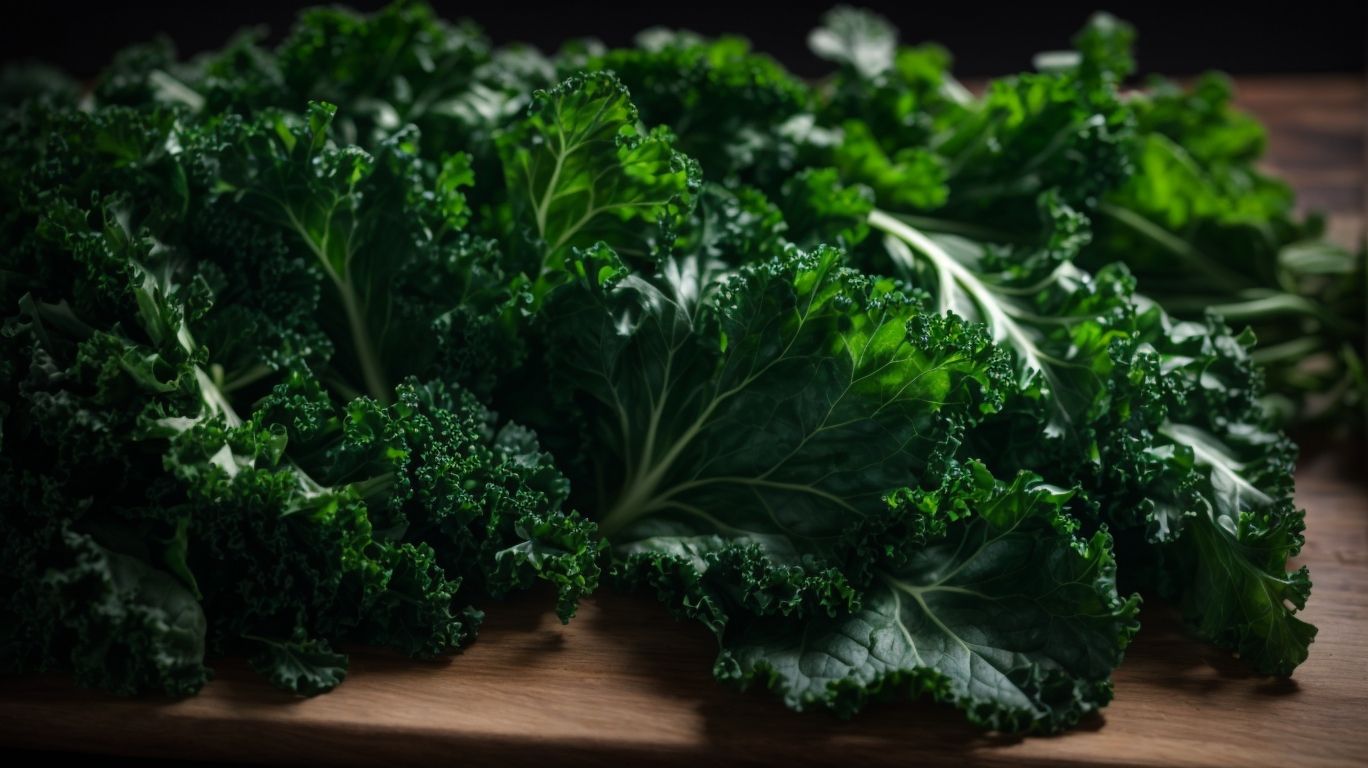
Credits: Poormet.Com – Christian Anderson
Choosing and preparing kale for salads involves selecting fresh bunches, washing them thoroughly, and removing tough stems before incorporating them into your dish.
When selecting kale for your salad, opt for vibrant leaves with no signs of wilting or yellowing. The freshest bunches will have crisp, firm leaves that are a deep green color. To wash the kale, fill a large bowl with cold water and submerge the leaves, gently swishing them around to remove any dirt or residue. Once washed, dry the kale thoroughly either by using a salad spinner or patting it gently with a clean kitchen towel.
To remove the tough stems, hold the base of the stem with one hand and slide the other hand along the stem to strip off the leaves quickly and efficiently. Now your kale is ready to be chopped, shredded, or torn and added to your favorite salad ingredients!
What to Look for When Choosing Kale?
When choosing kale for your salad, opt for vibrant, firm leaves with no signs of wilting or yellowing for the freshest taste and texture.
Look for kale leaves that are deep green in color, as this indicates high nutrient content. Avoid any limp or discolored leaves, as they may not be as flavorful or nutritious. Gently squeeze the leaves to ensure they feel crisp and sturdy, guaranteeing a satisfying crunch in your salad. Freshness matters greatly in kale, as older leaves tend to become bitter and tough. By selecting kale at its peak freshness, you are guaranteeing a vibrant and delicious salad every time.
How to Wash and Dry Kale?
Washing kale thoroughly under cold water and patting it dry with a clean towel or using a salad spinner helps remove dirt and ensures cleanliness before usage in salads.
When you are ready to wash your kale, start by filling a large bowl with cold water. Submerge the kale leaves one by one, agitating them gently to dislodge any debris. If there are visible impurities, rinse the leaves under running water.
After rinsing, pat the kale dry with a clean towel or use a salad spinner to remove excess water. Make sure the leaves are completely dry to avoid any sogginess in your dishes.
This preparation step is crucial as it not only ensures the cleanliness of the kale but also enhances its texture and flavor when incorporated into your recipes.
How to Remove the Tough Stems from Kale?
Removing tough stems from kale involves holding the stem with one hand and stripping the leaves off with the other to ensure a tender texture in your salad.
One effective technique for removing kale stems involves gripping the stem firmly at the base of a leaf and running your fingers upwards, separating the leaf with a gentle tug to maintain its tenderness. To speed up the process, consider using a sharp knife to slice along each side of the stem, preserving the most leafy parts for your salad. Remember to discard the tough stems as they can be bitter and detract from the overall flavor and texture of the dish.
What are the Different Ways to Cook Kale for Salad?
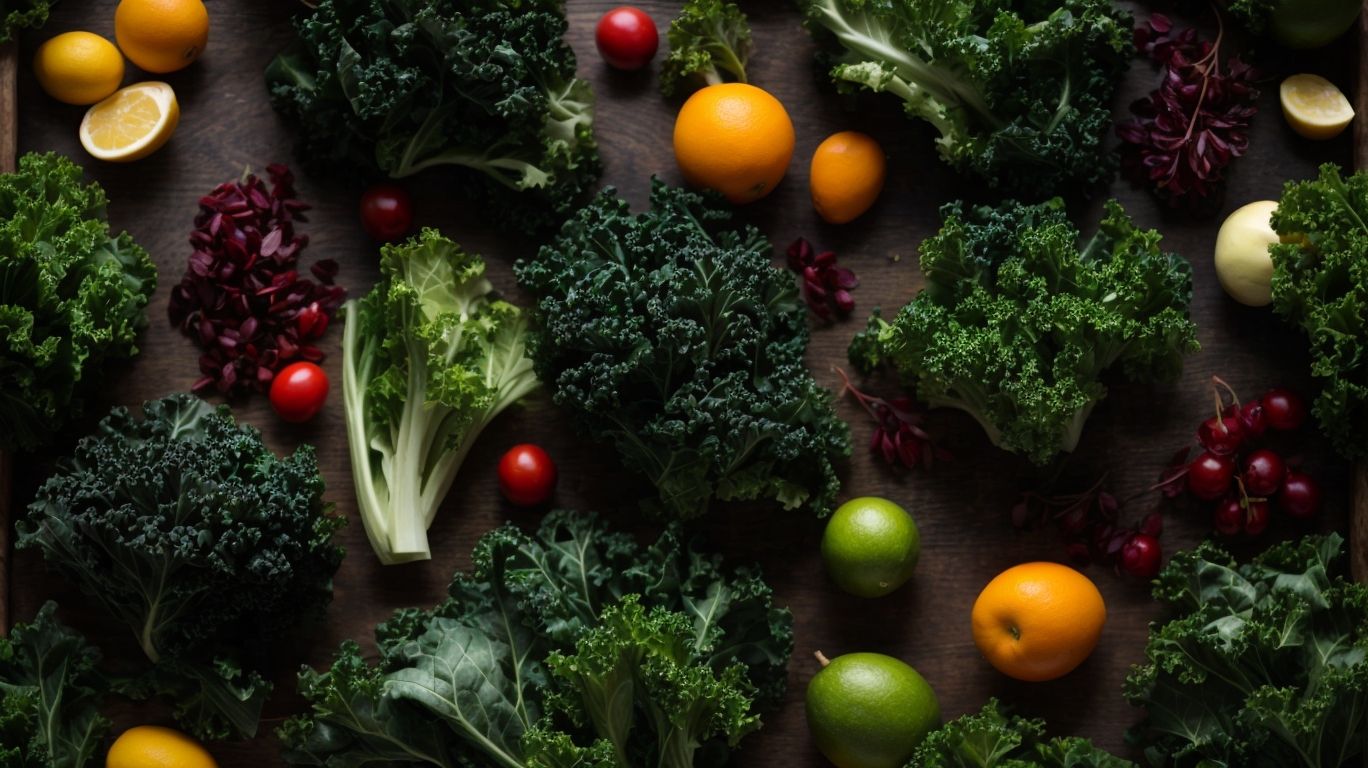
Credits: Poormet.Com – William Ramirez
Cooking kale for salads offers versatility with options such as raw kale salads, massaged kale salads, steamed kale salads, and roasted kale salads.
Raw kale salads provide a crunchy texture and vibrant color, perfect for those who enjoy the leafy green in its freshest form.
Massaged kale salads involve *kneading* the kale with dressing to tenderize the leaves and infuse them with flavor.
Steamed kale salads offer a softer, more delicate texture, ideal for those looking for a lighter alternative.
Roasted kale salads bring out a nutty flavor and crispy texture, adding a delicious twist to traditional salad recipes.
Raw Kale Salad
A raw kale salad offers a refreshing and crisp texture, allowing the vibrant flavors of the ingredients to shine through without cooking.
Preparing a raw kale salad starts with selecting the freshest bunch of kale. Wash the leaves thoroughly, removing any tough stems, and tearing the leaves into bite-sized pieces. The next step involves massaging the kale with a touch of olive oil and a sprinkle of salt. This helps to break down the fibrous texture of the kale, making it more tender to eat.
Adding a splash of bright lemon juice enhances the flavors, while a handful of nuts or seeds brings a delightful crunch to each bite. Mixing in colorful veggies like cherry tomatoes or bell peppers adds both texture and visual appeal to the salad.
Massaged Kale Salad
Massaging kale with olive oil or lemon juice helps tenderize the leaves, making them more palatable and enjoyable in a salad.
When you massage kale, you break down the tough cell structure of the leaves, which can often be quite fibrous and chewy when raw. This process not only enhances the texture but also reduces the bitterness that kale can sometimes have.
- To effectively massage kale, start by removing the tough stems and ribs.
- Then tear or chop the leaves into bite-sized pieces.
- Next, place the kale in a bowl, drizzle with a bit of olive oil or lemon juice, and sprinkle with a pinch of salt.
Steamed Kale Salad
Steaming kale for salads softens the leaves while retaining their nutritional value, offering a different texture and flavor profile.
When you steam kale for salads, the gentle cooking process breaks down the tough fibers of the leaves, making them more tender and palatable. This transformation not only enhances the eating experience but also makes kale easier to digest, especially for those who find raw kale too fibrous. By steaming, kale retains a vibrant green color and a mild, slightly sweet flavor, elevating its appeal in salads.
Roasted Kale Salad
Roasting kale for salads creates a crispy and crunchy texture, adding a unique flavor and satisfying crunch to your dish.
When you roast kale, it undergoes a transformation that intensifies its natural flavors, making it a versatile ingredient for salads. The high heat of roasting caramelizes the edges of the kale leaves, enhancing their sweetness while maintaining a delightful crunch. Roasted kale also offers a more robust texture compared to raw kale, which can sometimes be tough and fibrous. This process not only improves the taste but also the digestibility of the kale, making it more enjoyable to eat in salads.
What are Some Flavor Combinations for Kale Salad?
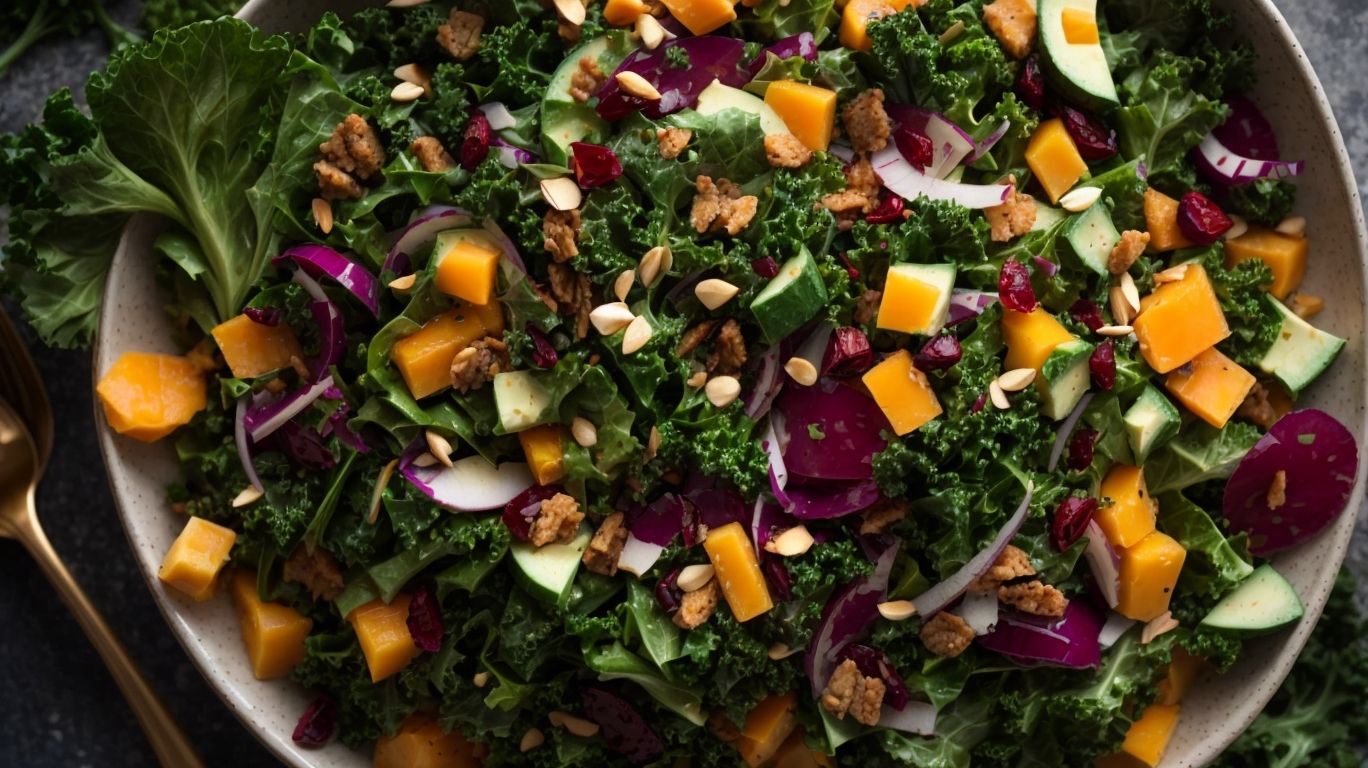
Credits: Poormet.Com – Juan Mitchell
Kale salads can be enhanced with a variety of flavor combinations, such as lemon and garlic, balsamic and Parmesan, apple and cranberry, and avocado and feta.
The pairing of lemon and garlic adds a zesty kick to the earthy flavor of kale, while the combination of balsamic and Parmesan brings a rich umami taste that complements the kale’s bitterness. Apple and cranberry offer a sweet and tangy contrast that balances the kale’s robustness, and the creamy texture of avocado and feta adds a luxurious finish to the salad, creating a harmonious blend of flavors and textures.
Lemon and Garlic Kale Salad
A lemon and garlic kale salad offers a zesty and refreshing flavor profile, combining citrusy notes with aromatic garlic for a delightful taste experience.
To prepare this vibrant salad, start by washing and finely chopping fresh kale leaves. Squeeze fresh lemon juice over the kale, allowing it to soak up the tangy flavor. Next, mince garlic cloves to add a subtle kick to the salad. Combine the kale, lemon juice, minced garlic, and a drizzle of olive oil in a mixing bowl. Toss the ingredients until the kale is evenly coated, allowing the flavors to meld together. Serve the salad chilled for a refreshing and zesty side dish that pairs perfectly with grilled meats or as a standalone light meal.
Balsamic and Parmesan Kale Salad
A balsamic and Parmesan kale salad offers a savory and umami-rich taste, combining the tangy sweetness of balsamic with the nutty notes of Parmesan cheese.
When preparing this delectable salad, it is crucial to massage the kale leaves with a drizzle of olive oil and pinch of salt to soften their texture and reduce bitterness. The combination of balsamic glaze drizzled over the kale, mixed with shavings of aged Parmesan cheese, elevates the flavors to a whole new level. Adding some toasted pine nuts or walnuts can provide a delightful crunch to this dish.
Apple and Cranberry Kale Salad
An apple and cranberry kale salad offers a fruity and refreshing taste, blending the crispness of apples with the tart sweetness of dried cranberries.
To create this delightful salad, start by thoroughly washing and drying fresh kale leaves. Remove the tough stems and chop the leaves into bite-sized pieces, ensuring they are tender and easy to eat. Apple slices add a crunchy texture to the salad, complementing the softness of the cranberries. Don’t forget to toss in a handful of dried cranberries, enhancing the sweetness and adding a burst of flavor to the dish. For a delicious dressing, consider a simple vinaigrette with a hint of honey or maple syrup to balance the fruity notes.
Avocado and Feta Kale Salad
An avocado and feta kale salad offers a creamy and indulgent taste, combining the buttery richness of avocado with the tangy saltiness of feta cheese.
To prepare this delectable salad, start by washing and drying the kale leaves thoroughly. Remove the tough stems and chop the leaves into bite-sized pieces. Next, slice the ripe avocado and crumble the feta cheese into desirable chunks.
In a large mixing bowl, combine the kale with the avocado and feta. Drizzle with a quality olive oil and a squeeze of fresh lemon juice for a zesty kick. Season with salt and pepper to taste.
Gently toss all the ingredients together, ensuring the avocado and feta coat the kale evenly. Allow the flavors to meld together for a few minutes before serving this vibrant and satisfying salad.
Tips for Making the Perfect Kale Salad
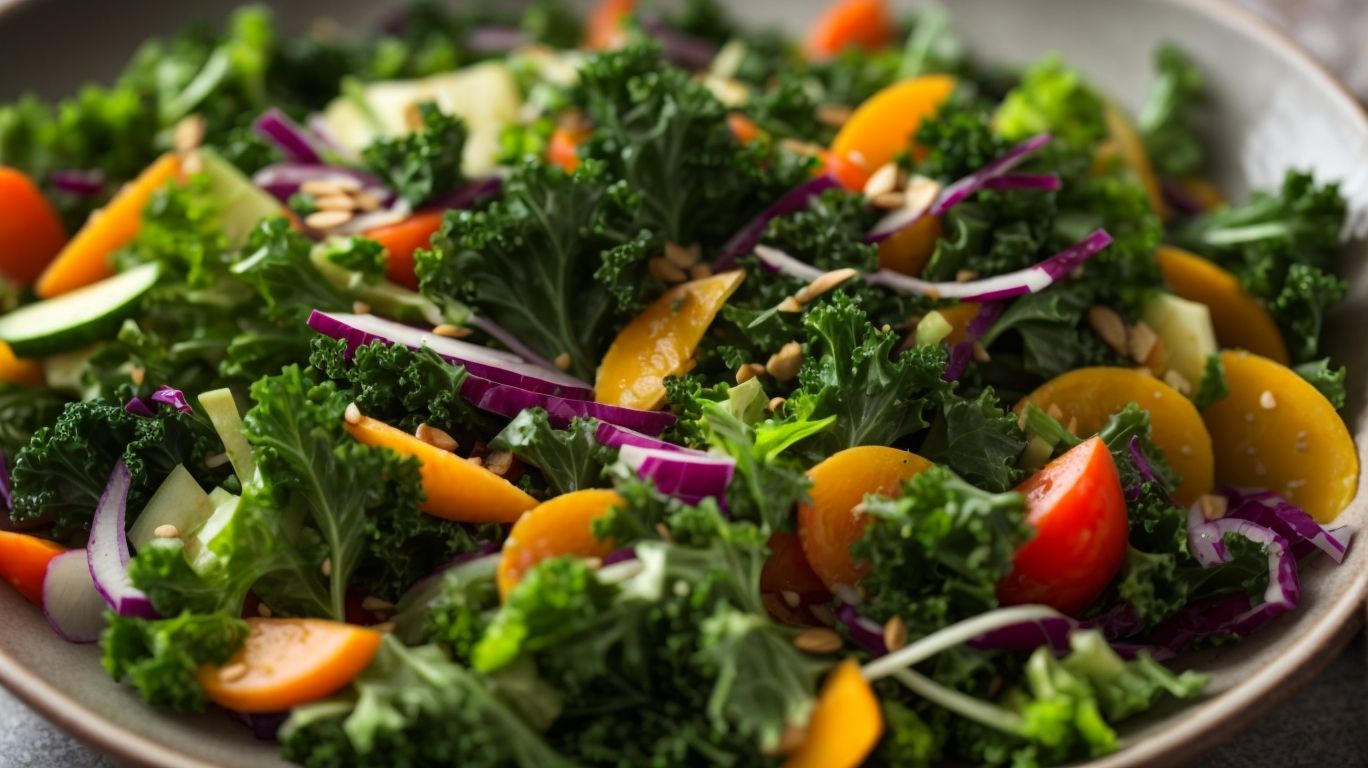
Credits: Poormet.Com – Carl Davis
To create a perfect kale salad, consider massaging the kale, balancing flavors and textures, and adding a variety of nutritious toppings for a satisfying meal experience.
Massaging the kale leaves before assembling your salad is a crucial step that helps to tenderize the tough leaves and enhance their flavor profile. Simply sprinkle a bit of salt over the washed and chopped kale, then using your hands, gently massage the leaves for a few minutes until they begin to soften.
Regarding flavor pairing, think about complementary tastes and textures. Consider combining sweet elements like dried fruits or honey with savory components such as nuts or cheese to create a harmonious blend of flavors in your salad.
Don’t underestimate the power of the right toppings to elevate your kale salad. Opt for options like toasted seeds, crumbled feta cheese, roasted chickpeas, or avocado slices to add crunch, creaminess, and depth of flavor to your dish.
Conclusion
In conclusion, kale stands out as a versatile and nutritious ingredient that can elevate salad recipes with its robust flavors, textures, and health benefits.
Its hearty leaves add a satisfying crunch and a vibrant pop of color to any salad bowl. What sets kale apart is its exceptional nutritional profile, packed with vitamins A, C, and K, as well as minerals like iron and calcium. This superfood also boasts powerful antioxidants and anti-inflammatory properties that make it a top choice for health-conscious individuals.
Kale’s versatility shines through in various salad styles – whether it’s being massaged into a mediterranean kale salad with feta and olives, tossed with fruits for a sweet kale salad, or mixed into a spicy Thai kale salad, there’s no limit to its culinary potential. With kale’s ability to withstand bold dressings and stand up to hearty add-ins like grains and proteins, it’s an ideal base for creating satisfying and nutritious salads.
Frequently Asked Questions
What is the best way to cook kale for a salad?
The best way to cook kale for a salad is to massage it with oil and lemon juice for a few minutes until it becomes soft and tender. This helps to break down the tough fibers and makes it more enjoyable to eat.
Can I use any type of kale for a salad?
Yes, you can use any type of kale for a salad, but curly kale is the most commonly used variety due to its tender leaves and mild flavor.
How do I prepare kale for a salad?
To prepare kale for a salad, remove the tough stems and chop the leaves into bite-sized pieces. Then, rinse the kale well and dry it thoroughly before using.
What are some toppings that go well with a kale salad?
Some toppings that go well with a kale salad include nuts, dried fruits, cheese, avocado, and a variety of dressings such as balsamic vinaigrette or lemon tahini.
Is it necessary to cook kale before adding it to a salad?
No, it is not necessary to cook kale before adding it to a salad. In fact, raw kale is often preferred as it retains its nutrients and has a nice crunchy texture.
How should I store leftover cooked kale salad?
Leftover cooked kale salad should be stored in an airtight container in the refrigerator. It will last for up to 3-4 days. Just make sure to keep any dressing or toppings separate until ready to eat.




